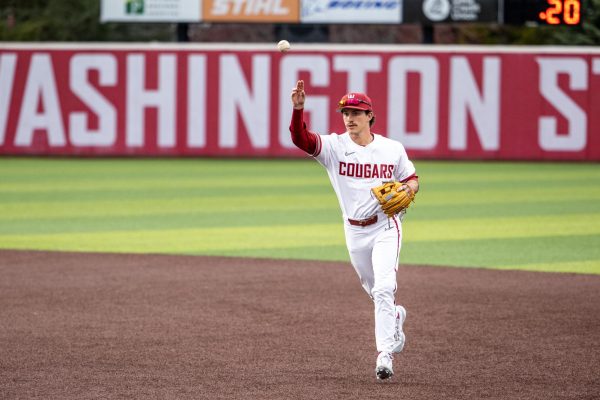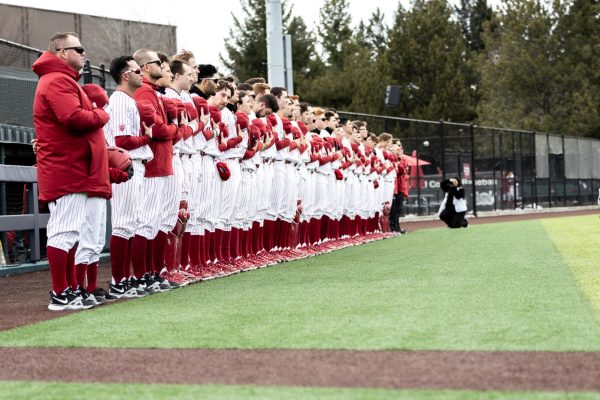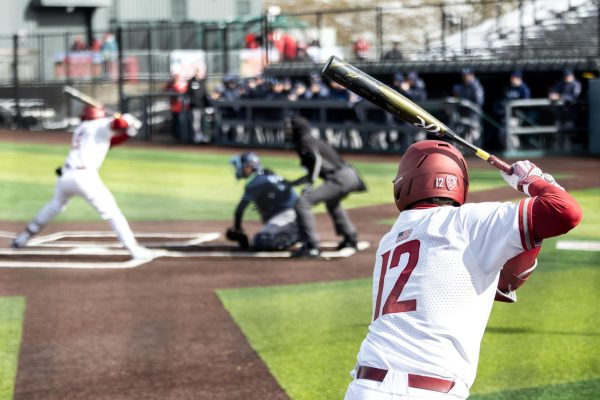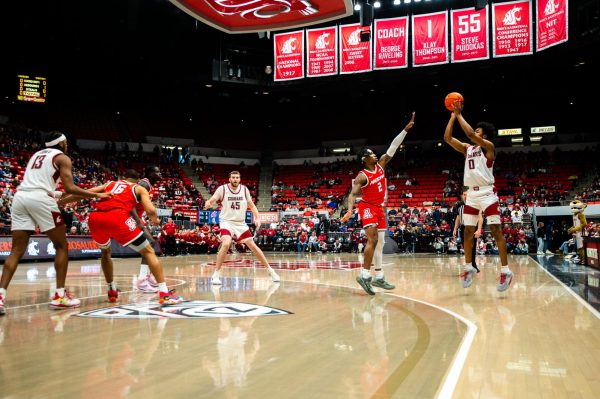A deeper look at WSU starting pitchers’ performances against the Hornets
February 23, 2017
While the WSU baseball team’s three starting pitchers struggled at times in last weekend’s one-win, two-loss effort at Sacramento State, each hurler displayed promising building blocks.
In further evaluation of each performance, clarity is given to Head Coach Marty Lees’ early-season selection of his weekend rotation.
Left-handed redshirt junior Damon Jones took the hill in the first game of Saturday’s doubleheader and finished with a four-inning, four-strikeout performance in the team’s 10-2 loss.
Jones suppressed the Hornets’ bats in his start, allowing one run on two hits over his four innings, but struggled to consistently throw the ball over the plate. The Idahoan walked three batters and was pulled from the game by Lees after throwing just 77 pitches.
Jones’ stat line was not what Lees envisioned in tabbing him as his No. 1 starter last week, and Jones’ inability to go deep into the game contributed to the bullpen’s eighth inning collapse, as a 2-2 tie quickly turned into a 10-2 deficit. At the same time, Jones displayed an ability to keep a strong offense quiet and looked the part of a Pac-12 starter if he can keep his walk rate down in the future.
The Hornets only mustered a .154 batting average against Jones and their only run came on a bloop single with two outs in the third. If Jones can keep his pitch count down in the earlier innings of games, he has the physical tools to meet Lees’ high expectations.
Junior right-hander Ryan Walker got the nod for the second game of Saturday’s doubleheader and had a tougher time working his way through the Hornets’ lineup than Jones in a 6-4 loss. Walker allowed four runs on six hits in five innings of work.
Making the switch from a middle relief pitcher to a regular starter this season, Walker stretched his pitch count further than Jones but missed fewer bats. The Arlington native allowed a pair of triples and a double, and the Hornets hit .300 off him for the game.
Walker’s strong suit is his ability to throw strikes early in the count, and he walked just one of the 21 batters he faced in his first start. By continuing to get ahead of hitters, Walker can reduce the amount of significant contact and extra base hits he allowed in his first start.
The final start of the series was made by junior left-hander Cody Anderson on Sunday. Anderson’s performance was somewhat of a mesh of the previous starters’ efforts and fell in-between the two in overall performance. Anderson allowed two runs on five hits while striking out seven in four-and-two-thirds innings of work.
The standout statistic for Anderson was his number of strikeouts. He nearly equaled the combined strikeouts of both Walker and Jones in about half as many innings. Having a strong strikeout starter with a six-foot-six-inch frame and throwing from the left side of the rubber is an asset not many other teams have.
Anderson was also the most efficient of the starters from the weekend, moving through four and two-thirds innings with just 69 pitches, compared to the figures of 77 and 79 for Jones and Walker. Building off the efficiency with which he threw the ball in Sunday’s 4-3 win may solidify Anderson’s role as a weekend starter for this season.
This weekend’s collective performance was disappointing in some areas for the team’s three starters but also showed flashes of brilliance.
Jones struggled to get through four innings this weekend, but can compete with the class of the conference if he is able to limit his walks and keep his pitch count down.
Despite being knocked around a bit, Walker showed why he was inserted into the rotation from the bullpen. As long as he can limit hard contact, Walker can likely turn out to be a solid second or third starter for the Cougars this season.
Finally, Anderson showed off strikeout prowess and looks to fit the part of the weekend rotation, assuming he can stretch out his starts.
The Cougars take on Loyola Marymount University at 6 p.m. on Friday in Los Angeles.



















